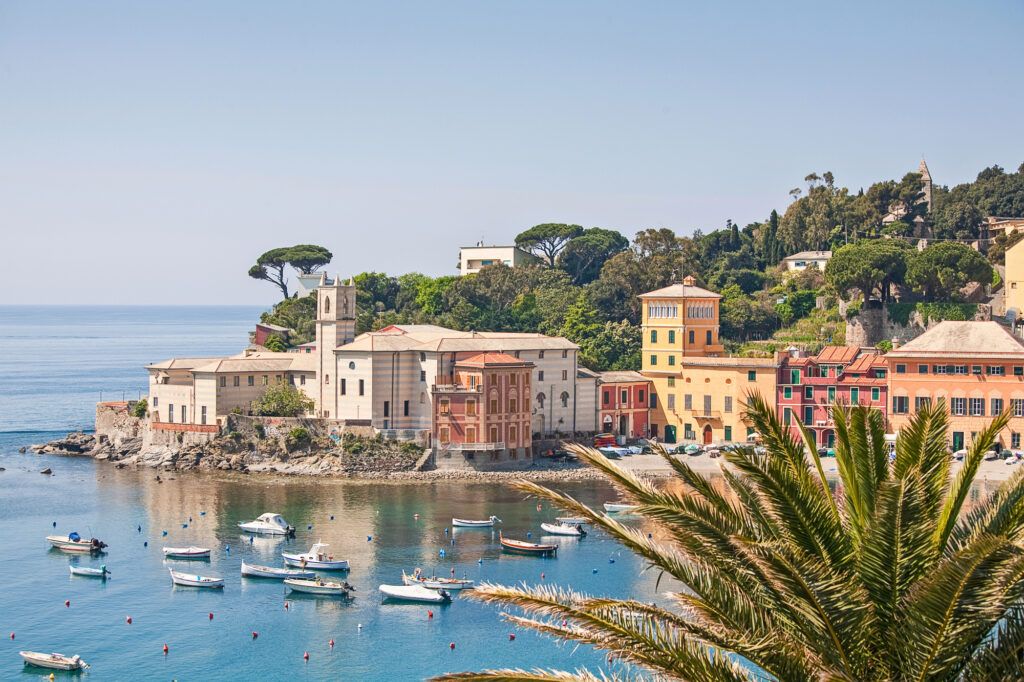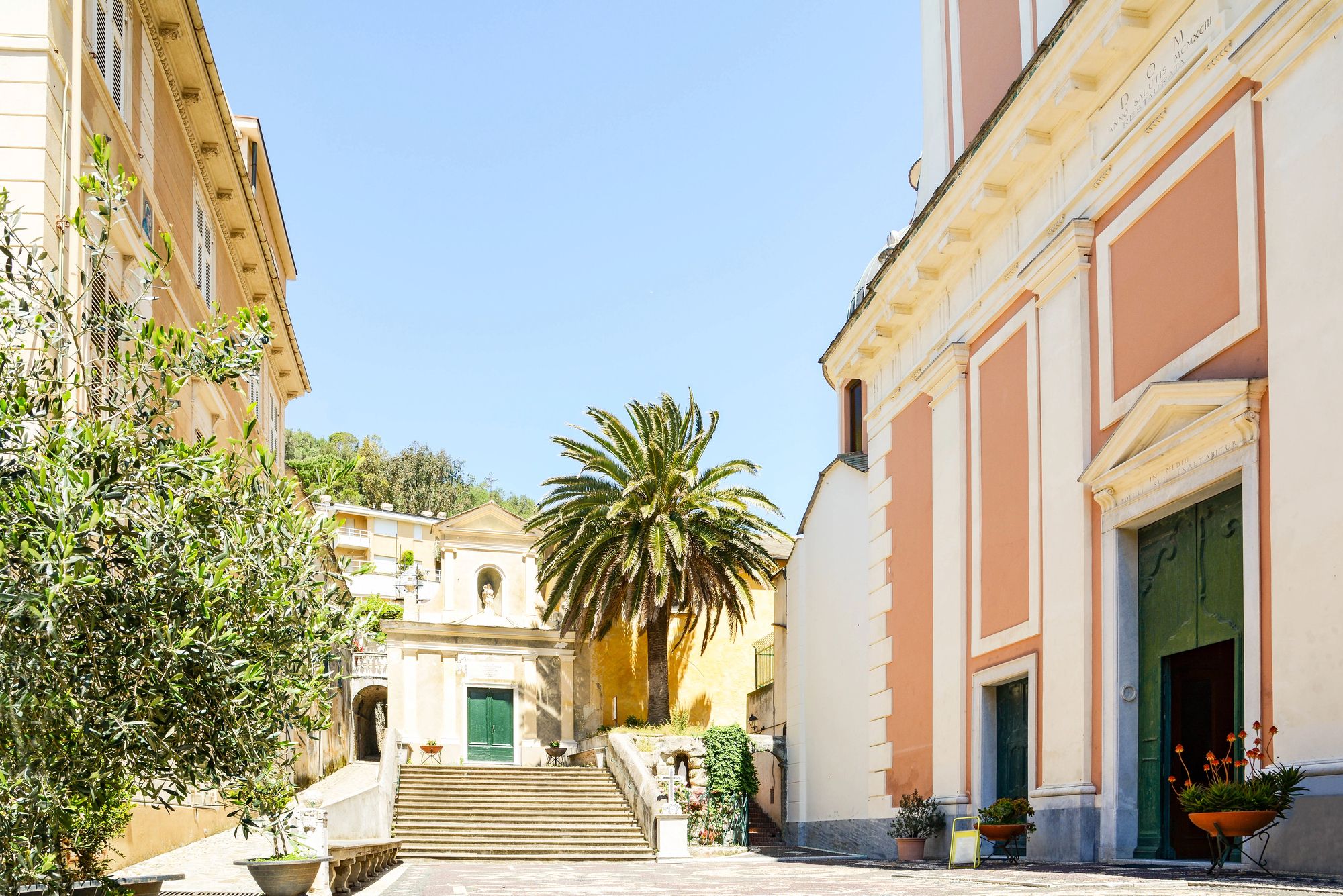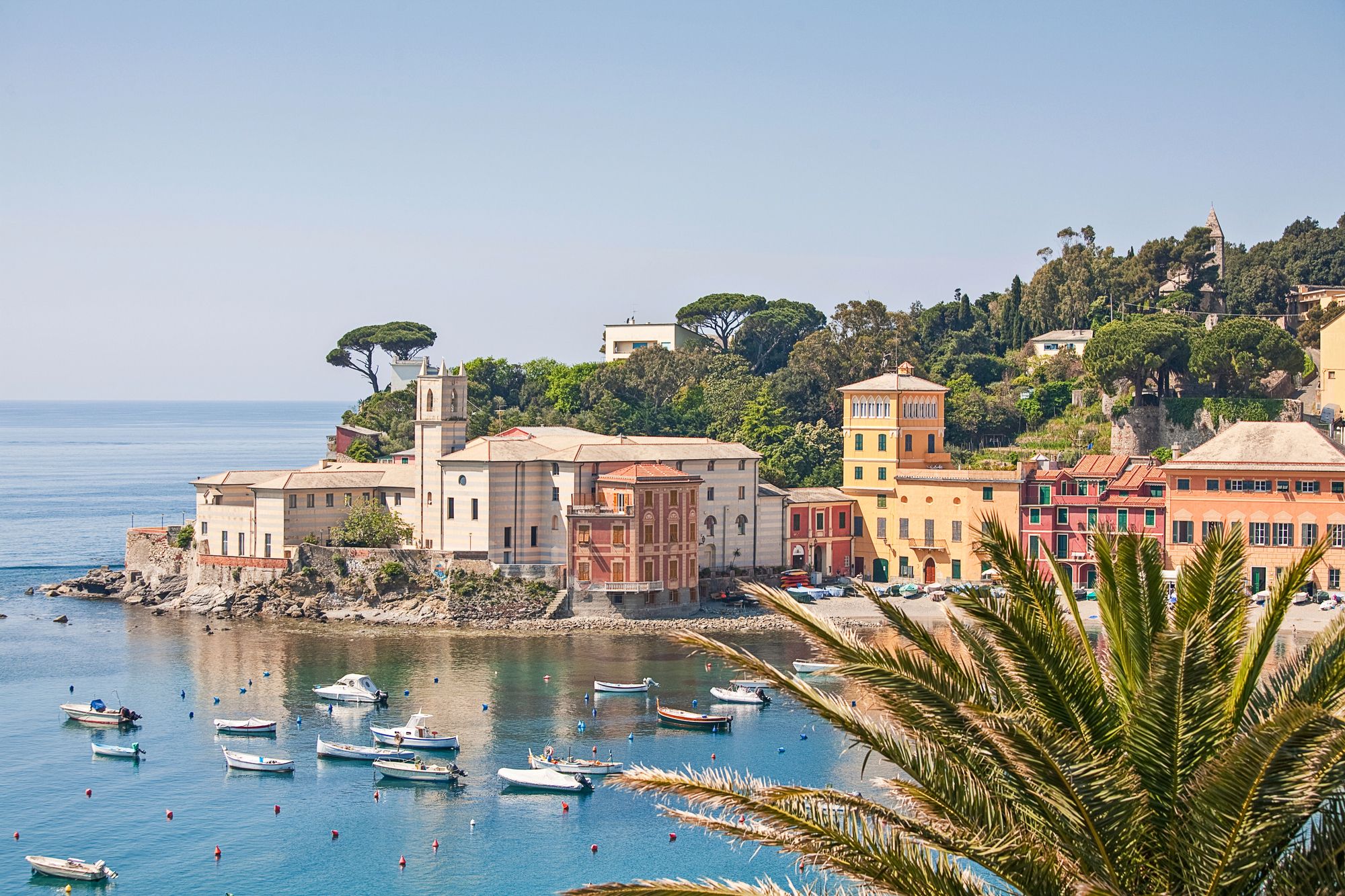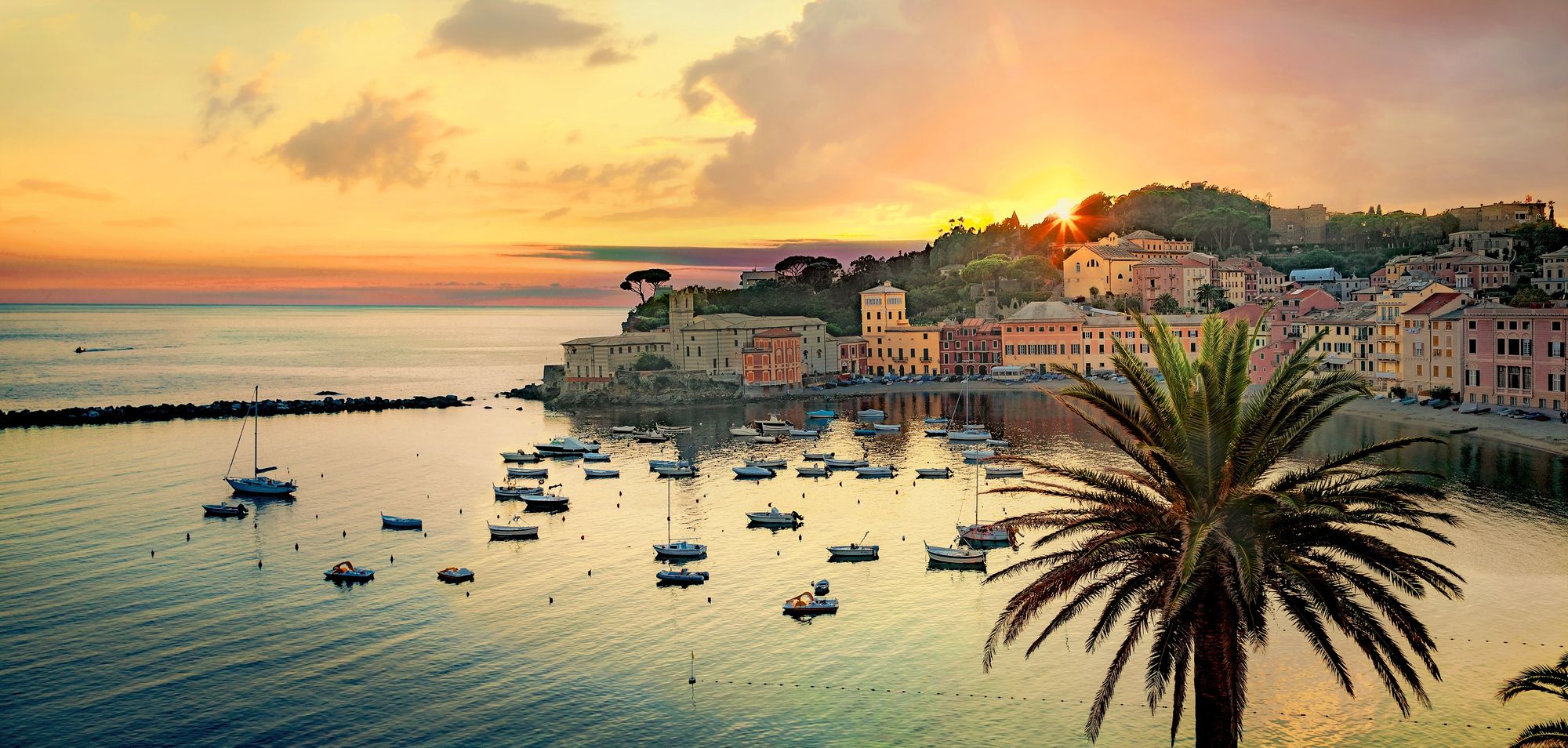Sestri Levante sits beautifully along the Italian Riviera, about 40 kilometers southeast of Genoa. This Ligurian town started out as an ancient maritime center, originally just a small island with a promontory that eventually hooked up with the mainland. Back in Roman times, people called the settlement Segesta Tigullorum, after the Tigulli people who settled this stretch of coast centuries before Christ.
Folks today sometimes call Sestri Levante “the town of two seas” because of its unusual geography. Standing on the peninsula, you get the impression of looking out at two different bodies of water. There’s something magical about the place, and it’s inspired plenty of writers and poets over the years, making it a spot with a real creative vibe in Italian culture.
Find available hotels and vacation homes instantly. No fees, best rates guaranteed!
Check Availability Now
Since 1967, Sestri Levante has hosted Italy’s top children’s literature prize, the Literary Award H.C. Andersen, Bay of Tales. The town’s journey from a Roman outpost to a beloved tourist spot gives visitors a chance to wander through layers of history while soaking up those stunning coastal views and the town’s distinctive Ligurian personality.
Origins and Ancient History
Sestri Levante’s story goes way back, with its strategic spot on the coast drawing in all sorts of civilizations. The area grew from a humble settlement into a notable Roman outpost called Segesta Tigulliorum.
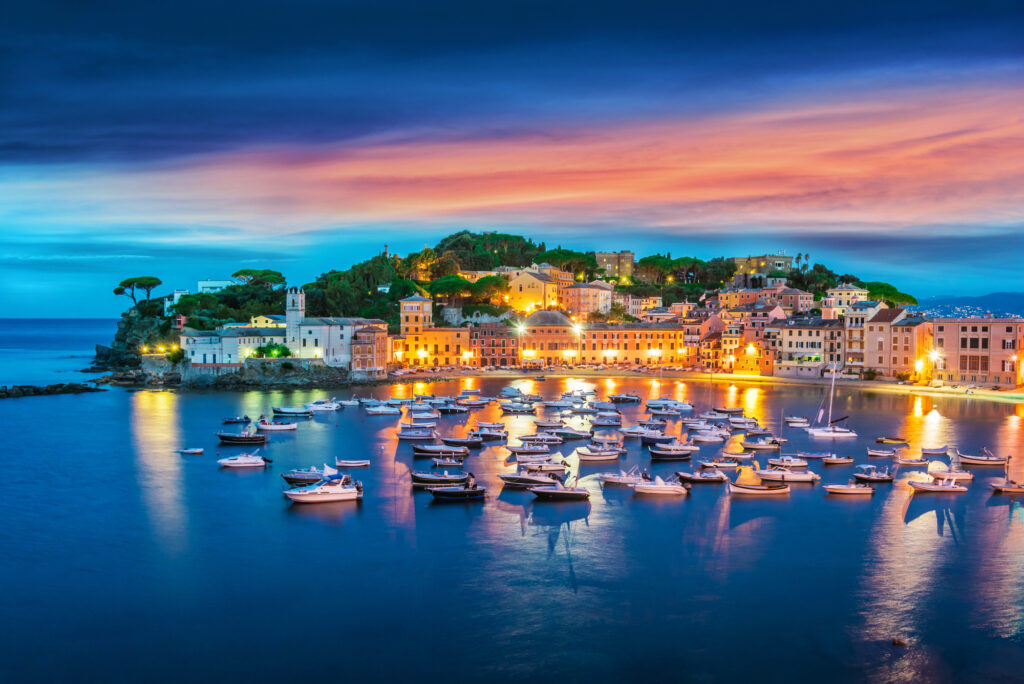
Prehistoric and Ligurian Settlements
The earliest traces of people living in Sestri Levante reach all the way back to prehistoric times. Ancient Ligurian tribes settled here first, attracted by the natural harbor and the safety of the area.
These early inhabitants built small settlements on the promontory, which used to be an island before it was naturally joined to the land. The Ligurians put up simple dwellings and got by through fishing and basic farming.
People mined copper in the nearby Libiola area, showing that early metallurgic activity took place here. The settlements at Trigoso and Vignolo are among the oldest signs of human presence in this region.
Archaeologists found stone tools and pottery fragments on Azaro hill, which help them piece together how these early folks lived day to day.
Roman Era: Segesta Tigulliorum
Around the 2nd century BCE, the Romans moved in and folded the area into their growing empire. They called it Segesta Tigulliorum (sometimes just Tigulliorum) and developed it into a key coastal settlement.
The Romans saw the value in the natural harbor along the Ligurian coast. They built roads connecting Segesta to other Roman towns and improved the harbor, making it more useful for trade and travel.
Wealthy Roman families like the Tassani set up villas and estates around here. The settlement thrived as a minor trading post along those busy Mediterranean shipping routes.
Roman rule brought organized city planning. Archaeologists have dug up evidence of a small forum and thermal baths. The town acted as an administrative center for the rural areas around it.
You can still spot Roman ruins tucked into later medieval buildings in the old town center.
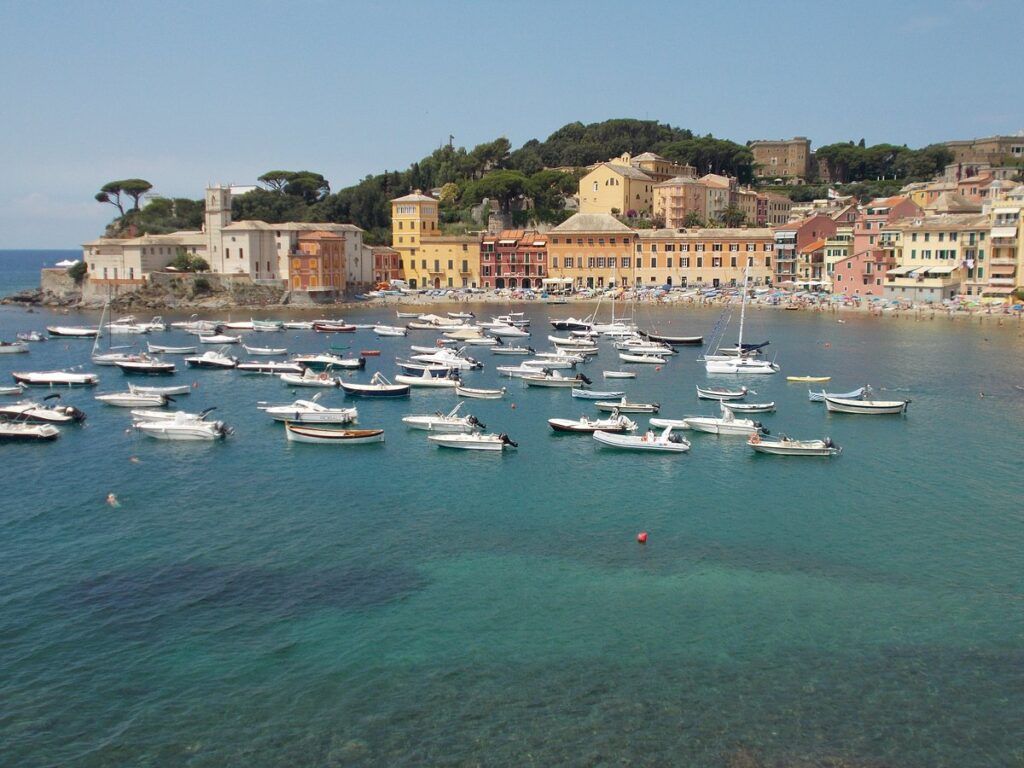
Medieval Development and the Fieschi Era
The Middle Ages changed Sestri Levante in big ways. It grew from a small Roman settlement into a fortified town. The Fieschi family played a huge role, building up defenses and founding important religious sites.
Rise of the Fieschi Family
The Fieschi family from Lavagna started to dominate the region in the 12th century. In 1133, they attacked the Gulf of Tigullio, including Sestri Levante, but the Republic of Genoa defended the area and brought Sestri Levante under its protection.
Even after that setback, the Fieschi family’s power kept growing. In 1158, Rubaldo Fieschi got major privileges from Emperor Frederick I Barbarossa—control over Lavagna, Sestri Levante, and Varese Ligure, plus rights to collect water and road tolls.
Eventually, the Fieschi and Genoa made peace in 1198, ending years of fighting. That deal let the Fieschi join Genoese political life while still holding plenty of sway in Sestri Levante.
Fortifications and the Castle
Sestri Levante’s geography made it easy to defend, so during the Middle Ages, the town grew into a kind of fortress. The medieval layout had narrow streets and buildings positioned both for living and for defense.
The castle of Sestri Levante became the military hub. Built on high ground, it gave a clear view of any threats coming from land or sea.
These defenses proved vital during the power struggles between the Fieschi family and Genoa. The fortified town protected its growing trade as it became a significant hub.
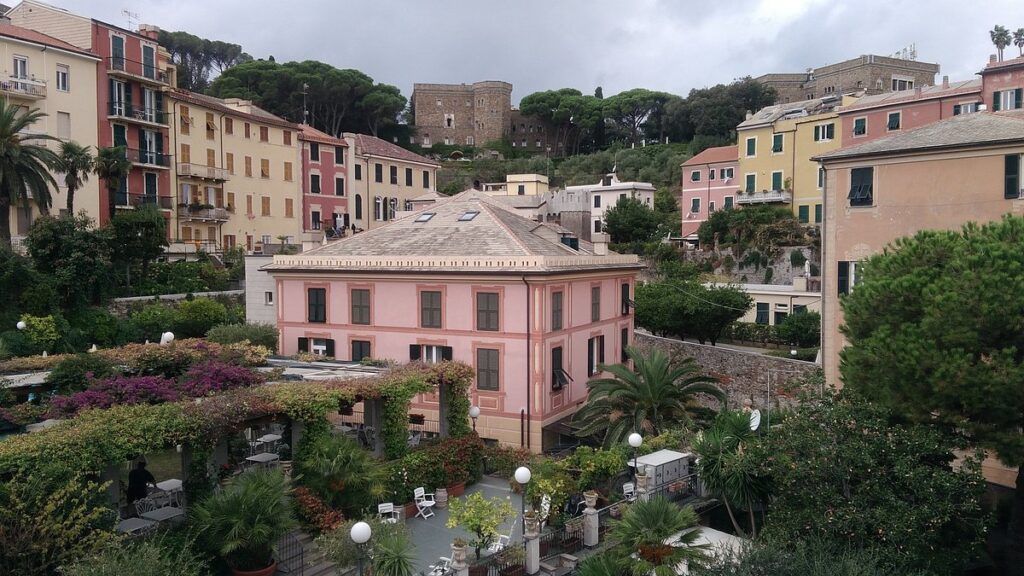
Religious Institutions: Churches and Abbeys
The medieval period saw the rise of several major religious buildings in Sestri Levante. The Church of San Nicolò, built in a medieval style, turned into one of the town’s key religious landmarks. It’s not far from the Baia del Silenzio (Bay of Silence) and became a spiritual center for locals.
The Church of San Pietro in Vincoli also served the spiritual needs of the community. Churches from this era usually featured the simple, sturdy stonework typical of Ligurian architecture.
The Abbey of San Colombano brought monastic influence into the mix. These religious sites didn’t just guide people spiritually; they also became centers of learning and culture during the Middle Ages, helping to keep knowledge and traditions alive through turbulent times.
Sestri Levante Under the Republic of Genoa
By the 12th century, Sestri Levante became closely tied to the powerful Republic of Genoa. That relationship shaped the town’s growth, defenses, and economy for generations.
Strategic Maritime Role and Trade
The Republic of Genoa valued Sestri Levante’s position along the Ligurian coast. The town grew into an important merchant center in Genoa’s maritime network. Ships loaded with olive oil, wine, and textiles sailed out from its harbor all the time.
Local merchants thrived under Genoese rule, building trade connections all over the Mediterranean. Genoa sent officials to oversee trade and collect taxes from the growing town.
By the 14th century, Sestri Levante had a lively market where goods from inland mixed with imports. The harbor was expanded to handle bigger ships and more traffic.
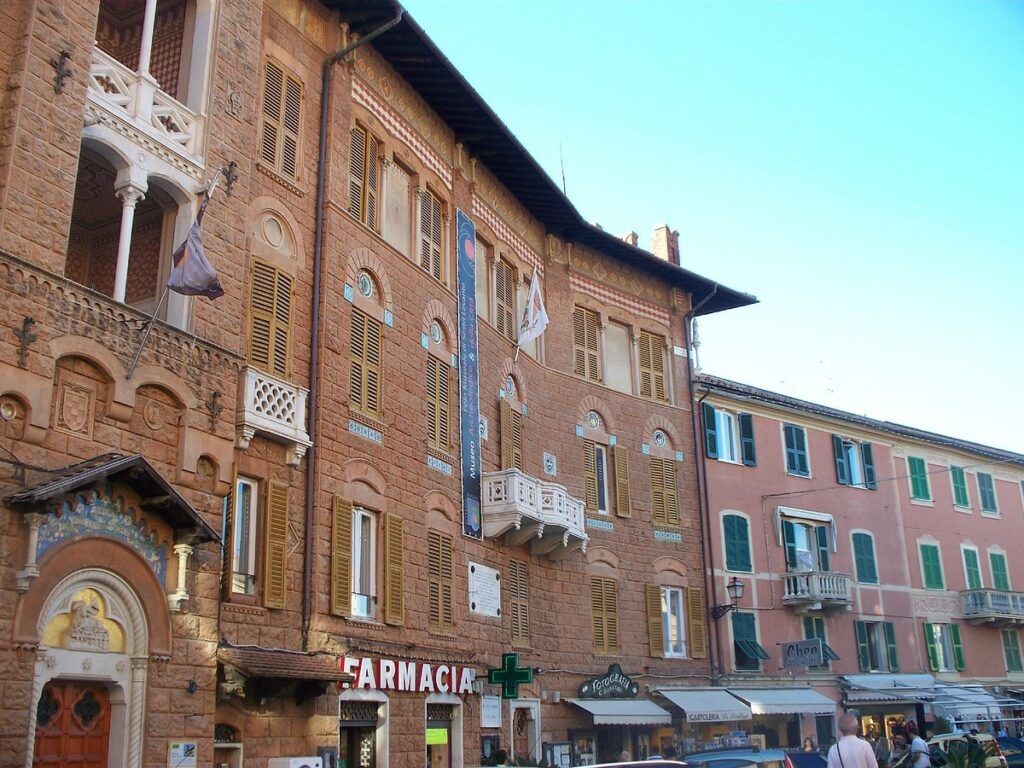
Defenses Against Pisa
Genoa’s rivalry with Pisa made Sestri Levante a tempting target. To guard this strategic spot, Genoa built strong fortifications along the promontory.
Easy booking across stunning accommodations from historic palazzos to modern retreats. Colorful buildings and pristine beaches create the perfect Mediterranean getaway!
Secure Your Italian Retreat
Watchtowers gave residents a way to spot incoming Pisan ships. In 1170, when Pisan forces tried to take the town, Genoese defenders managed to fight them off.
Over the years, they kept improving the defenses. Stone walls surrounded the most vulnerable parts of town, and a garrison of soldiers stayed on alert.
Still, Sestri Levante suffered occasional raids. Turkish and Saracen pirates managed to damage and sack the village in 1542 and again in 1607, but the town always stayed under Genoese control.
Religious and Artistic Heritage
Sestri Levante’s churches and palaces show off a blend of Romanesque and Baroque styles, filled with artistic treasures. Generations of local and visiting artists have left their mark on the town’s religious buildings.
Romanesque, Baroque, and Artistic Influences
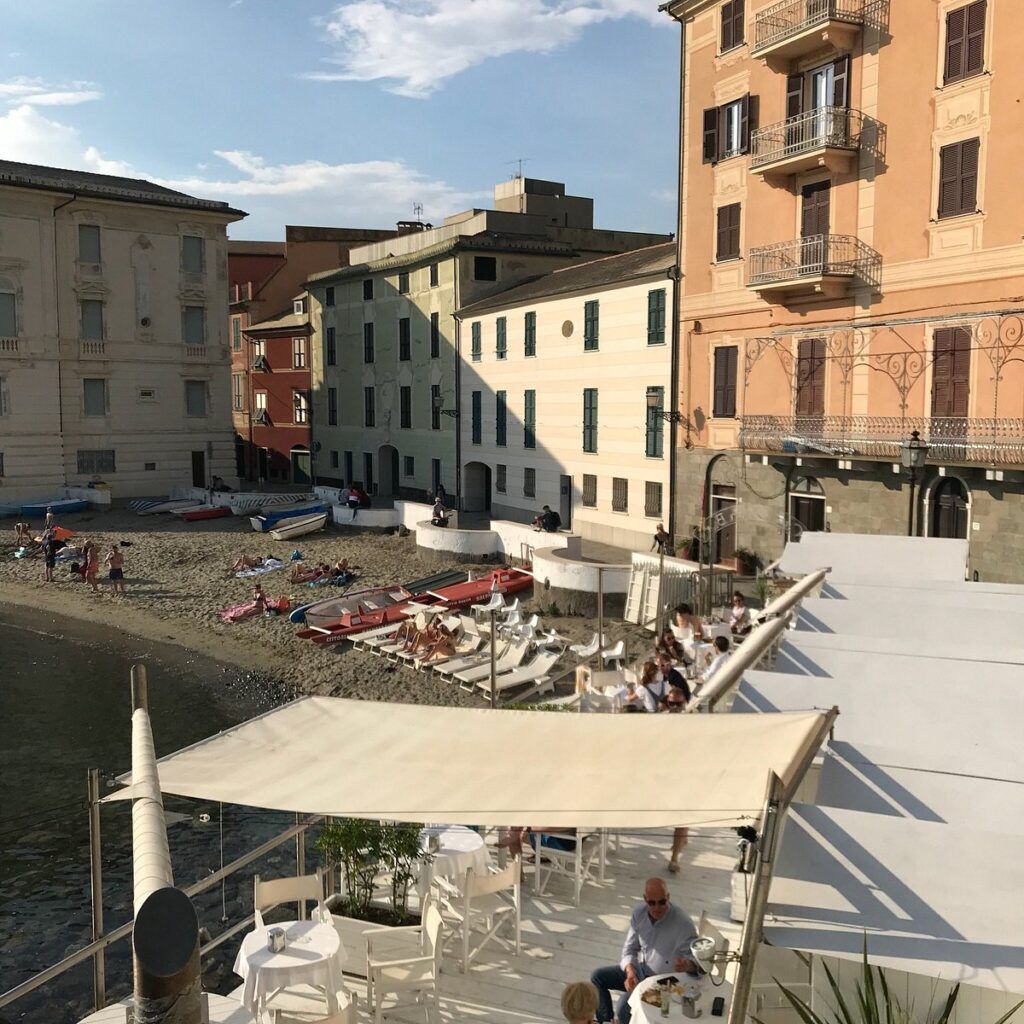
The architecture in Sestri Levante tells a story of artistic evolution. The oldest buildings have Romanesque features—thick stone walls and rounded arches. Over time, the more decorative Baroque style took over, especially in the 17th century.
Artists like Domenico Fiasella, known as “Il Sarzana,” painted important religious works that still hang in local churches. Anton Maria Maragliano, a master woodcarver, created detailed wooden sculptures and altarpieces.
Francesco Bassano’s paintings bring Bible stories to life with bold colors and dramatic scenes. His art shows the Venetian influence that somehow made its way to this coastal town.
Notable Religious Buildings
The Chiesa dell’Immacolata stands out as one of the town’s most important religious sites. Its elegant façade leads into an interior packed with artworks, including paintings by local artists and beautiful marble altars.
Palazzo Fascie isn’t strictly religious, but it houses valuable cultural collections of religious artifacts and art. The building itself reflects the town’s changing architecture over the centuries.
Palazzo Durazzo-Pallavicini shows off the grandeur of noble homes, often with private chapels inside. These spaces featured commissioned religious art, sometimes rivaling the churches in quality.
Many churches feature wooden sculptures from Maragliano’s workshop, famous for their emotional expressiveness and skill. These pieces still play a big part in religious processions that keep old traditions alive.
Transformation Through Modern Times
Sestri Levante changed dramatically in the modern era, going from a small fishing village to a popular coastal destination while still hanging on to its unique character and heritage.
The 19th and 20th Centuries
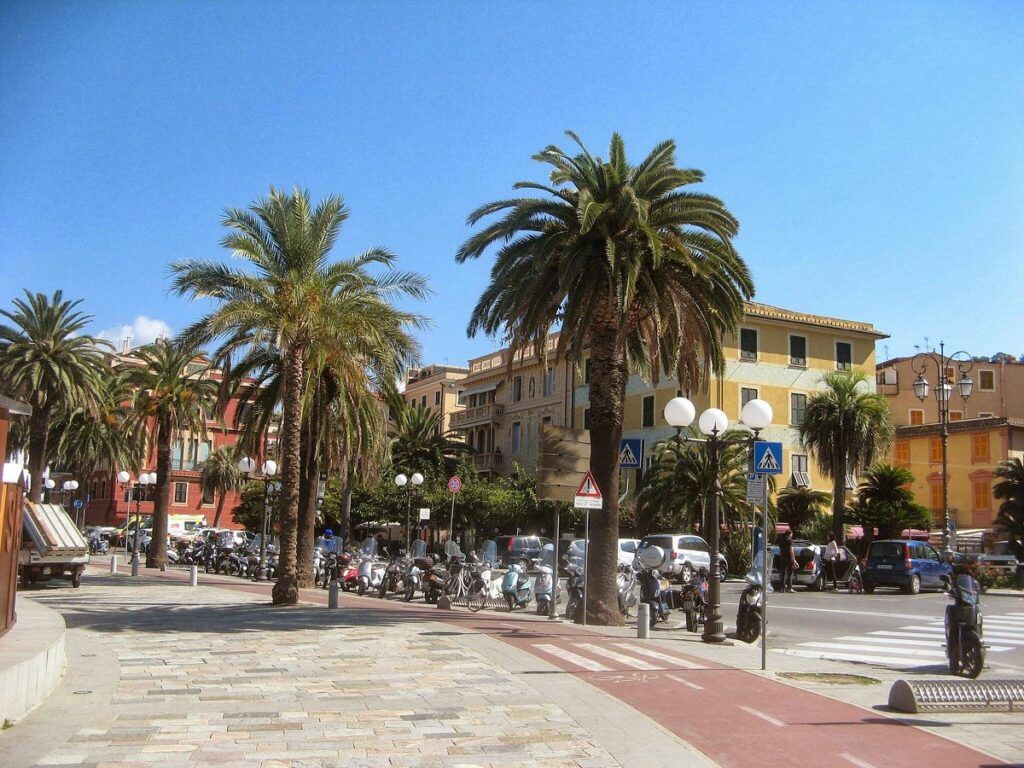
The 19th century brought industry to Sestri Levante and shook up the local economy. The railway arrived in the late 1800s, connecting the town to bigger cities, which made it easier to get to and boosted business.
In the early 20th century, Sestri Levante started shifting toward tourism. The natural beauty of its twin bays, Baia del Silenzio (Silent Bay) and Baia delle Favole (Fairy-Tale Bay), drew visitors from all over Italy and beyond.
The 1950s really put Sestri Levante on the map, when Italian television showed off the town’s picturesque scenery. TV presenter Enzo Tortora famously named the larger bay “Baia delle Favole” during an episode of Campanile Sera broadcast from Sestri Levante.
Tourism gradually replaced fishing and the old industries as the backbone of the comune, which sits in postal code 16039.
Integration into Unified Italy
After Italian unification in the 1860s, Sestri Levante officially joined the modern Italian state. This shift brought administrative reforms and kicked off new infrastructure projects around town.
The local government evolved into what’s now the Comune di Sestri Levante, operating in Italy’s UTC+1 time zone. Municipal leaders have tried to protect historical sites while also bringing in modern amenities—sometimes a tricky balance.
During the 20th century, Sestri Levante juggled development and conservation. Urban planners kept the medieval charm of the old town intact, even as newer areas grew up around it.
After World War II, the town rode the economic boom, growing tourism without losing its authentic vibe. That ongoing mix of preservation and progress pretty much defines Sestri Levante’s approach to development today.
Geography and Coastal Landmarks
Sestri Levante sits on a striking promontory that juts into the Mediterranean, giving the town a dramatic profile along the Ligurian coast. Its location creates unique coastal features that have drawn visitors for ages.
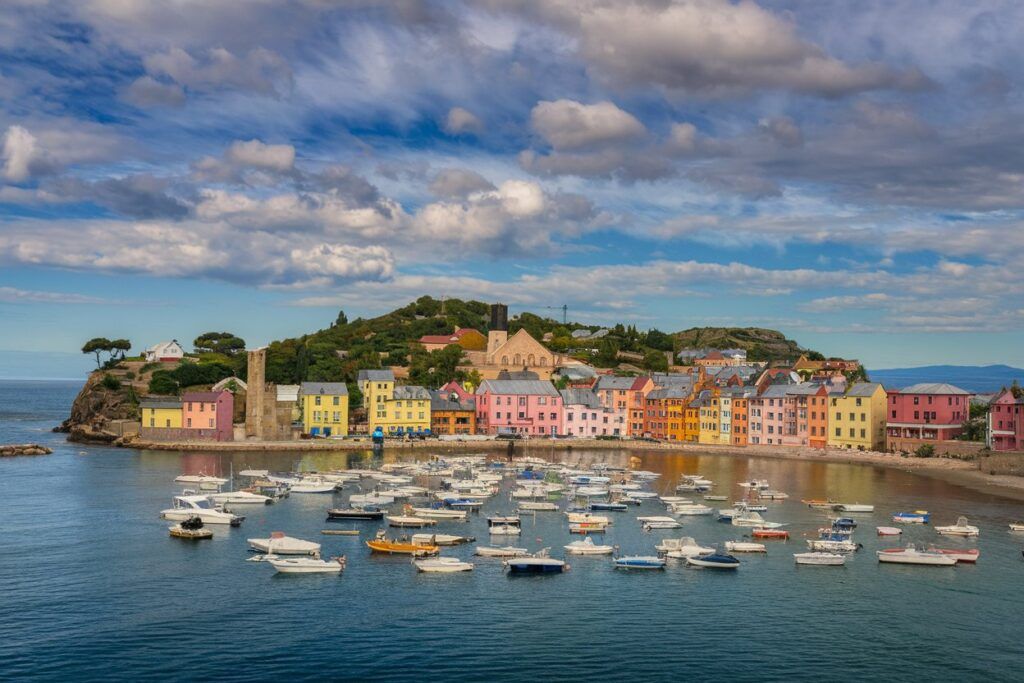
Baia delle Favole and Bay of Silence
The Baia delle Favole (Bay of Fables) runs along Sestri Levante’s eastern side. Hans Christian Andersen, who visited in the 1800s, loved the place so much that it inspired the bay’s name. This bigger bay has a long sandy beach that curves around the Gulf of Tigullio.
The Baia del Silenzio (Bay of Silence) rests on the western side. It’s a smaller, more tucked-away cove, famous for calm waters and colorful fishing boats. Traditional buildings hug the shore, making it feel almost frozen in time.
These two bays shape Sestri Levante’s identity. Local fishermen still use them, keeping the town’s maritime traditions alive.
Beaches and Panoramic Views
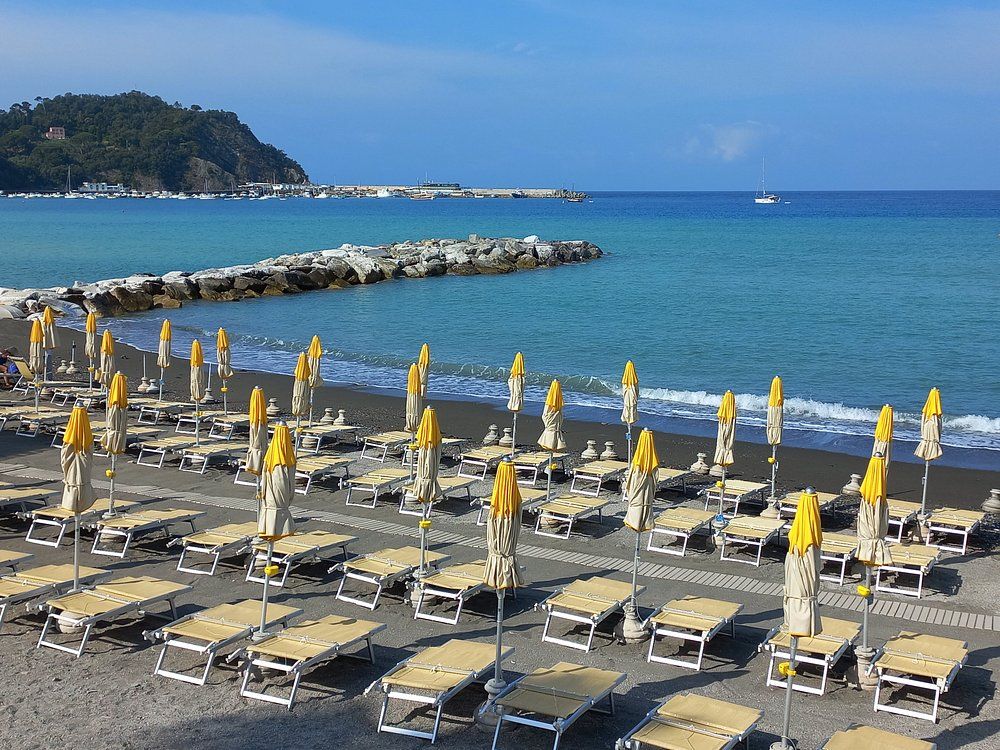
Sestri Levante’s beaches range from golden sand to pebbly stretches. The main beach on Baia delle Favole runs nearly a kilometer, so there’s plenty of room for everyone.
The town’s hilltop spots offer spectacular panoramic views. From different vantage points, you can catch glimpses of:
- The whole Gulf of Tigullio coastline
- The Ligurian Apennines dropping into the sea
- Distant Portofino, on especially clear days
The Mediterranean climate means outdoor exploring is pleasant most of the year. Winters stay mild and summers get warm, making it easy to enjoy the scenery.
From seaside hotels to charming villas, find your perfect stay in this enchanting two-bay peninsula. Instant booking with best price guarantee!
Browse Accommodations Now
Walking paths link the best viewpoints along the promontory, so you can wander and see both bays and the Ligurian coast from all sorts of angles.
Regional Context and Connections
Sestri Levante sits in a pretty strategic spot along the Ligurian coast, acting as a connector between the eastern and western stretches of the Italian Riviera. This location has shaped how the town developed and interacted with neighbors over the years.
Neighboring Towns and Hamlets
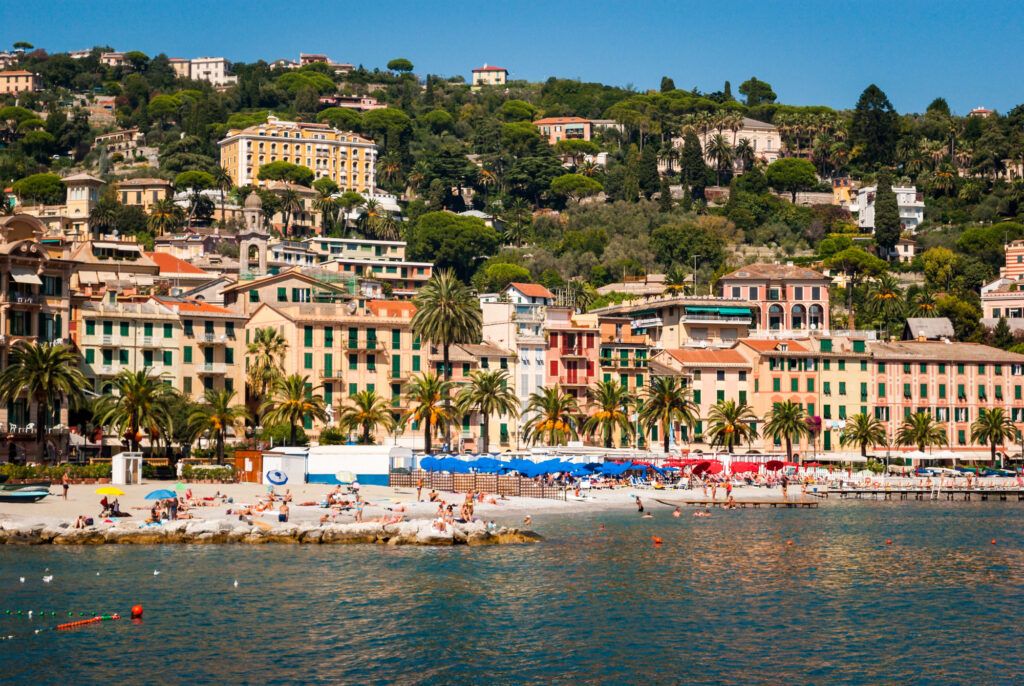
Several smaller communities surround Sestri Levante, and they’ve shared economic and cultural ties for generations. Riva Trigoso, just east of town, grew up as a shipbuilding hub and still keeps its maritime roots strong.
Up in the hills, hamlets like San Bernardo, Santa Vittoria di Libiola, and Fossa Lupara supported Sestri with agriculture, supplying olives, wine, and chestnuts.
To the east, you’ll find Varese Ligure, a medieval town famous for its circular layout and eco-friendly ways. The Tigullio area nearby includes Santa Margherita and the well-known Portofino, creating a network of inviting destinations along the coast.
Role Within the Italian Riviera
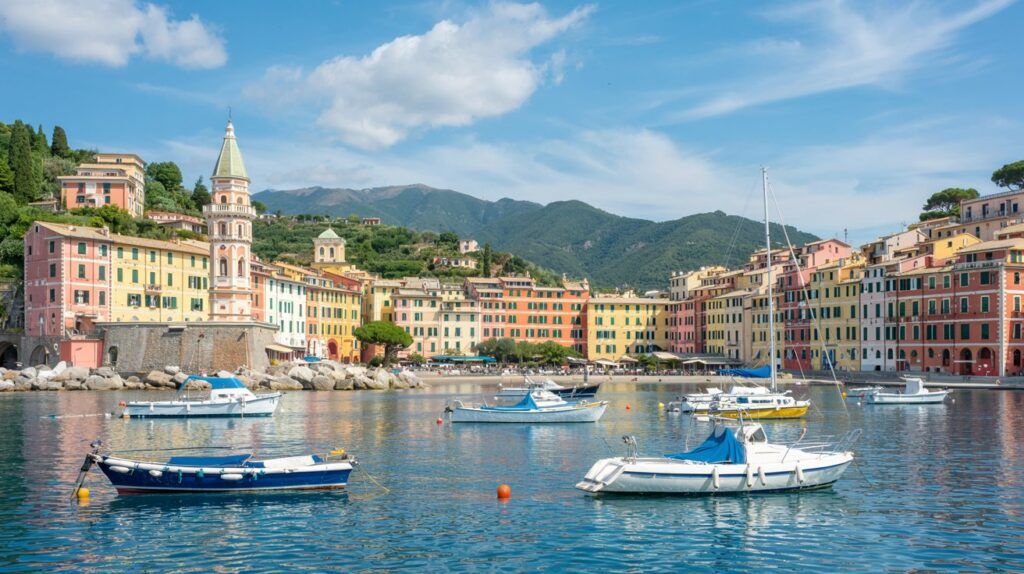
Sestri Levante serves as a handy transit hub for the Italian Riviera. Its train station connects travelers to the Cinque Terre on one side and Genoa on the other, making it a practical base for exploring.
Unlike its glitzier neighbors Portofino and the Cinque Terre, Sestri Levante kept a balanced economy that goes beyond tourism. Shipbuilding in Riva Trigoso and other commercial activities gave the town some stability through changing times.
The town acts as a cultural bridge between different parts of the Riviera. It blends the fishing traditions of the eastern coast with Genoa’s cosmopolitan influences, creating a character that really captures Ligurian coastal life.
Cultural Significance and Literary Ties
Sestri Levante has a special spot in literary history, drawing writers who found inspiration in its landscapes. The town’s unique geography and charm have shaped cultural works and still celebrate literary connections today.
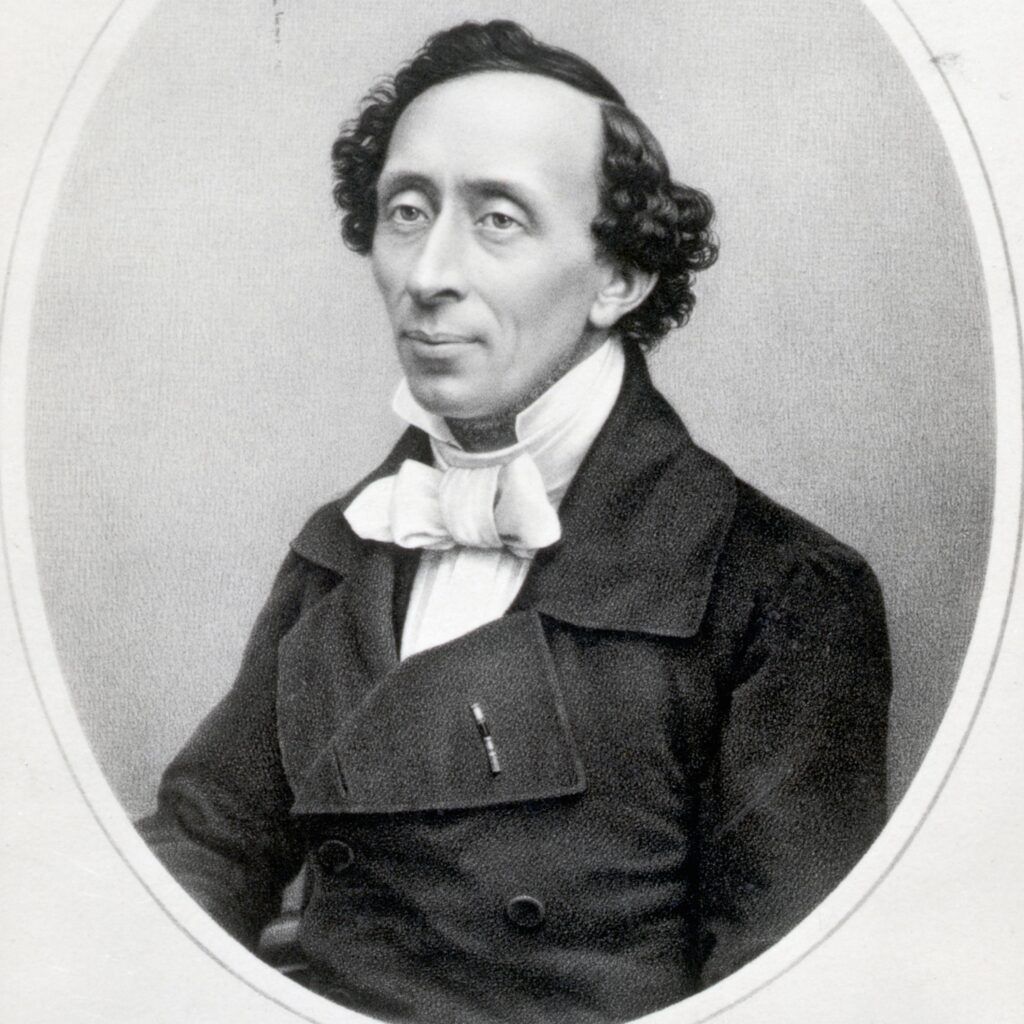
Hans Christian Andersen and the Town
Hans Christian Andersen came across Sestri Levante during his European travels in the 1800s. The Danish writer fell for the eastern bay, which people later called the “Bay of Fables” (Baia delle Favole) in his honor.
Since 1967, Sestri Levante has hosted the Literary Award H.C. Andersen – Bay of Tales. This award celebrates top-notch children’s literature, tying the town’s identity to Andersen’s fairy tale legacy.
Every year, the literary festival brings in authors and readers from Italy and beyond. Local schools get involved too, with programs that encourage kids to dream up their own stories inspired by the magical setting.
Dante Alighieri’s Connections
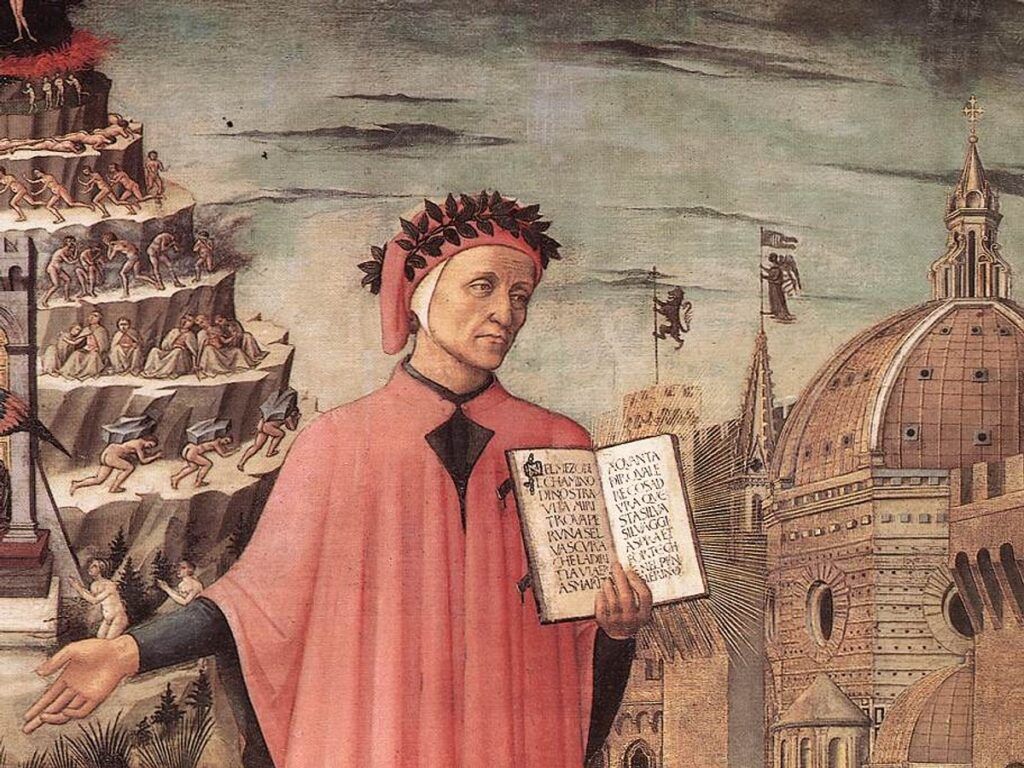
Dante Alighieri, Italy’s legendary poet, also has ties to Sestri Levante. He referenced the Ligurian region in “The Divine Comedy.”
Back when Sestri Levante belonged to the Republic of Genoa, the political scene Dante navigated influenced his writing. Some scholars think Dante might have visited during his exile from Florence.
Local tradition claims that some of Sestri Levante’s landscapes inspired parts of Dante’s descriptions in “The Divine Comedy.” The town keeps this connection alive with cultural events and educational programs about Dante’s work.
These literary ties give Sestri Levante more than just natural beauty—they add a layer of depth as a cultural destination.
Historic Old Town and Daily Life
Sestri Levante’s historic center keeps its authentic feel with colorful buildings, narrow pedestrian lanes, and a layout that shows off its fishing village roots. Visitors can soak up both the architecture and the lively local culture that still thrives here.
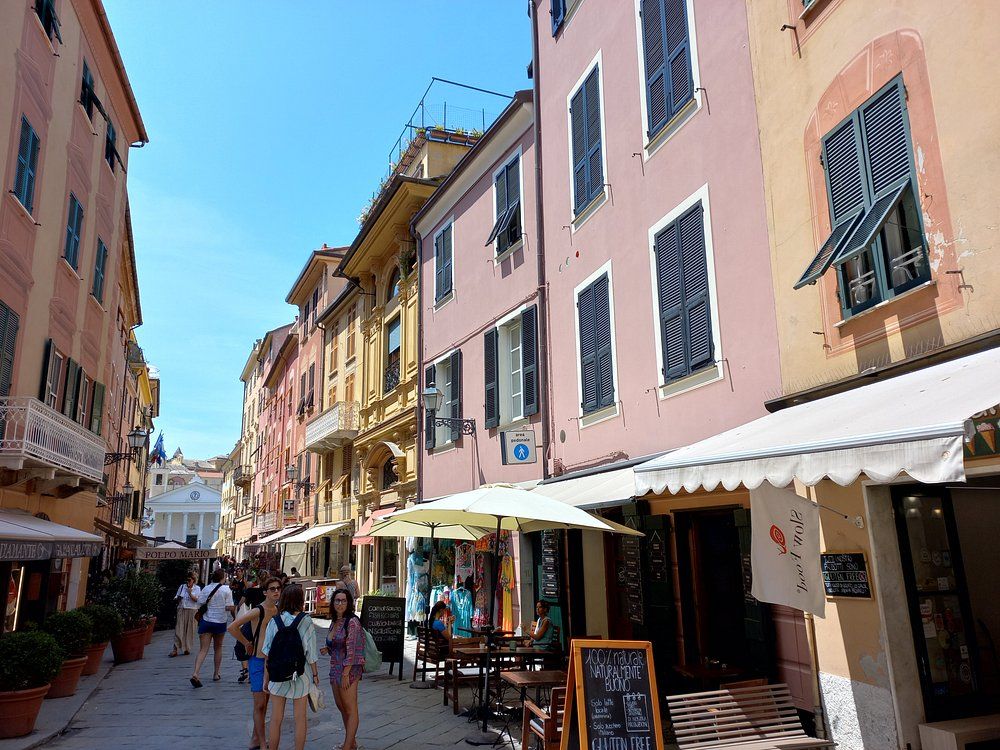
Urban Structure and Notable Palazzos
The old town sits on what used to be an island, now attached to the mainland. Winding medieval streets run between bright buildings, creating that cozy, close-knit vibe typical of Ligurian coastal towns.
Palazzo Fascie stands out as one of the most important historic spots. Today, it’s a cultural center hosting exhibitions and events about local heritage.
Palazzo Durazzo-Pallavicini shows off the grandeur of Sestri’s noble past. Its elegant design reflects the power of the families who once ruled the region during the Republic of Genoa’s heyday.
The Church of San Nicolò, dating to the 17th century, marks the entrance to the old town and helps visitors get their bearings.
Shopping and Restaurants
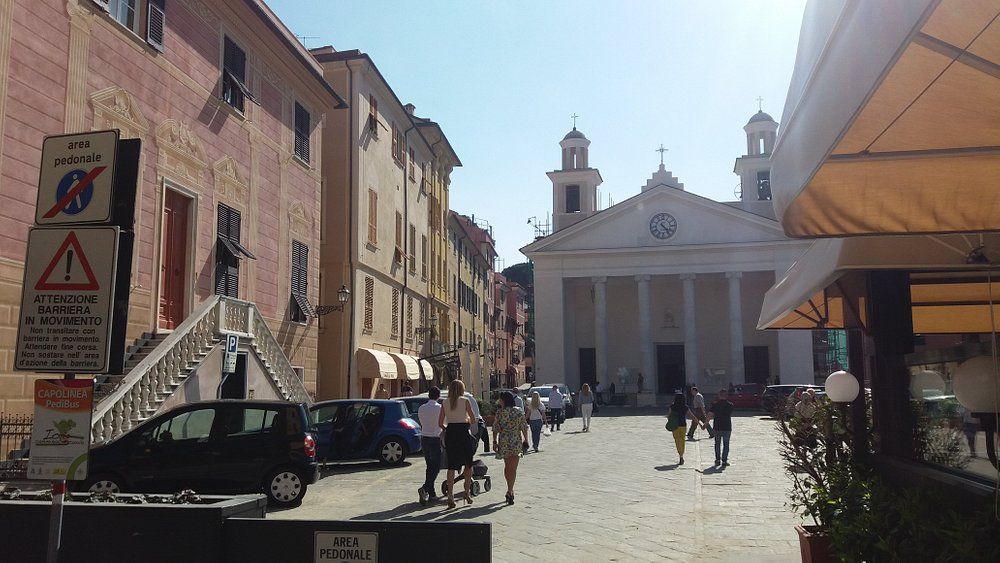
The heart of the old town is full of small boutiques and artisan shops—not big retail chains. Many stores offer local goods like olive oil, pesto, and handmade souvenirs.
Restaurants here focus on classic Ligurian food, with fresh seafood front and center. Most are family-run and have been around for generations.
The food scene ranges from laid-back trattorias to fancier spots, especially near Baia delle Favole (Fairy-Tale Bay) and Baia del Silenzio (Silent Bay).
On market day, local farmers and producers fill the old town with seasonal fruits, veggies, cheeses, and regional specialties—a great chance to taste the real flavors of the area.
Cuisine and Local Traditions
Sestri Levante’s food scene really reflects its coastal setting and Ligurian heritage, giving visitors a true taste of Mediterranean life through traditional dishes and local events.

Ligurian Dishes and Seafood
Sestri Levante’s cuisine centers on seafood caught daily from the Ligurian Sea. Fishermen bring in anchovies, sea bass, and octopus, and you’ll find those on menus all over town.
Trofie al pesto is a staple: hand-twisted pasta from Liguria. Other local favorites include focaccia (soft bread topped with olives or onions) and farinata, a savory chickpea pancake.
Classic fish dishes like ciuppin (fish stew) and burrida (fish in walnut sauce) show off the town’s sea connection. Many bay-side restaurants serve these traditional meals with a side of gorgeous views.
Pesto Sauce and Regional Specialties
Pesto sauce is king in Sestri Levante. Locals make it with fresh basil, pine nuts, garlic, Parmigiano-Reggiano, and Ligurian olive oil, all crushed together the old-fashioned way in a marble mortar.
The town produces top-notch olive oil from the terraced hillsides. This oil forms the base for many dishes and often sits on the table as a finishing touch.
Some unique specialties? Pansoti—herb and ricotta-filled pasta, usually served with walnut sauce. For dessert, people enjoy pandolce, a sweet bread with pine nuts, raisins, and candied fruit.
Wines from the nearby Cinque Terre, especially white Vermentino, pair perfectly with Sestri Levante’s seafood and round out the Ligurian dining experience.
Tourism and Accommodation Today
Sestri Levante has grown from a fishing village into a favorite tourist spot, yet it’s managed to keep its authentic charm. The town offers a range of places to stay and services for all sorts of travelers.
Where to Sleep in Sestri Levante
Visitors can pick from several types of accommodation, depending on their style and budget. Many hotels and B&Bs cluster near Baia del Silenzio (Bay of Silence) and Baia delle Favole (Bay of Fables).
Elegant resorts, waterfront apartments, and vacation rentals with immediate confirmation. Between the Bay of Fables and Bay of Silence, your dream Italian escape awaits!
See Available Properties

